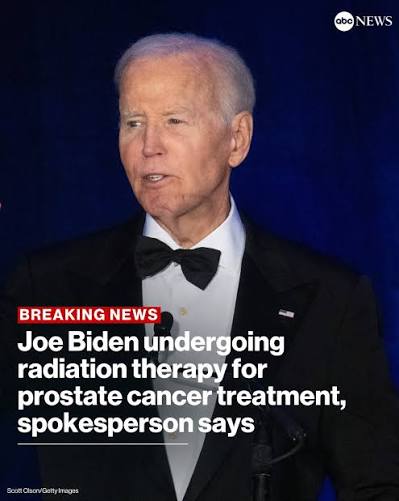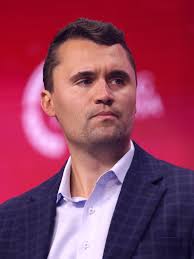Joe Biden prostate cancer treatment: Health News,How old is

Men his age are not usually screened for prostate cancer, the American Cancer Society recommends that men in their 50s and 60s. Today we will discuss about Joe Biden prostate cancer treatment: Health News,How old is
Joe Biden prostate cancer treatment: Health News,How old is
In May 2025, the world learned that former U.S. President Joe Biden had been diagnosed with an aggressive form of prostate cancer. The news immediately drew global attention, not only because of Biden’s high public profile but also because it highlighted the often-silent dangers of late-stage prostate cancer in older men.
At 82 years old, Biden’s diagnosis raised questions about his health, treatment options, and long-term prognosis. His case provides a powerful lens through which to understand prostate cancer — its detection, treatment challenges, and the ongoing debate about screening in aging men.
Understanding Prostate Cancer

What Is Prostate Cancer?
Prostate cancer begins in the prostate gland, a small organ located below the bladder in men. It’s one of the most common cancers among males, especially in those over 50. While many prostate cancers are slow-growing and pose minimal risk, some are highly aggressive, spreading rapidly to other parts of the body.
The Gleason scoring system helps determine cancer severity by examining how abnormal the cancer cells look under a microscope. Scores range from 6 (low risk) to 10 (very high risk). Biden’s reported Gleason 9 places him in the highest-risk category — indicating a rapidly growing cancer more likely to spread.
Metastasis and Its Implications
When prostate cancer metastasizes, it spreads beyond the prostate to distant organs, most often to the bones. This stage — known as Stage IV prostate cancer — is considered advanced and typically incurable. Treatment focuses on controlling disease progression, relieving symptoms, and extending life rather than achieving a cure.
In Biden’s case, cancer cells had reportedly reached his bones, classifying his illness as metastatic hormone-sensitive prostate cancer. Although serious, this stage can still respond well to modern treatments, especially those that suppress male hormones that fuel tumor growth.
Why Biden’s Diagnosis Was Late
Biden’s last recorded PSA (prostate-specific antigen) screening was in 2014, more than a decade before his diagnosis. Medical guidelines often advise against routine PSA screening after age 70, as overdiagnosis and overtreatment can outweigh benefits. For this reason, many older men — even those as active as Biden — may go years without screening.
Aggressive cancers like Biden’s can also develop and spread silently. Early stages often cause no symptoms, meaning detection usually comes only after urinary issues, fatigue, or bone pain appear — signs that cancer has advanced.
While some critics argued that regular screenings might have caught Biden’s cancer earlier, his case reflects the broader challenge doctors face: balancing the potential benefits of screening against the risks of unnecessary treatment in older patients.
Biden’s Initial Treatment Plan
Hormone Therapy
Shortly after his diagnosis, Biden began hormonal therapy, a cornerstone treatment for metastatic prostate cancer. Known medically as androgen deprivation therapy (ADT), this approach drastically reduces testosterone and other male hormones that prostate tumors need to grow.
Hormone therapy can be delivered through pills, injections, or surgical removal of the testes (an option rarely used today). In Biden’s case, he reportedly began an oral hormone regimen lasting several weeks.
When the cancer is still hormone-sensitive, as in Biden’s situation, ADT often achieves rapid results, shrinking tumors and reducing pain. However, over time, prostate cancer cells can adapt and grow even without hormones — a stage called castration-resistant prostate cancer (CRPC). At that point, doctors must add more advanced drugs or chemotherapy to control the disease.
Radiation Therapy
By October 2025, Biden’s medical team confirmed he had entered a new phase of treatment combining radiation therapy with ongoing hormonal therapy.
Radiation is used to target cancer cells in the prostate bed or bone metastases, helping control pain and slow progression. When combined with ADT, it can extend survival and delay resistance to treatment.
The radiation course reportedly lasts several weeks. During this period, patients may experience fatigue, urinary irritation, or gastrointestinal side effects, but these are usually temporary and manageable with supportive care.
Possible Chemotherapy and New-Age Treatments
Given the aggressiveness of Biden’s cancer, oncologists might consider adding chemotherapy (such as docetaxel) to his regimen. Studies show that combining hormone therapy with chemotherapy early on can improve survival in high-risk metastatic prostate cancer.
In addition, Biden’s doctors could use next-generation androgen-receptor inhibitors like abiraterone or enzalutamide — powerful drugs that further suppress hormonal signaling even when traditional ADT stops working.
Patients in Biden’s position also benefit from bone-protective medications such as bisphosphonates or denosumab to strengthen bones, reduce fractures, and prevent complications from metastases.
Challenges of Treating Cancer at Age 82
Managing Treatment Side Effects
Older patients often face more side effects from cancer therapy. Hormone therapy can cause fatigue, muscle loss, hot flashes, weight gain, and mood changes. Radiation may temporarily irritate the bladder or bowels.
In advanced age, these side effects can significantly impact quality of life. Thus, Biden’s doctors must carefully balance treatment intensity with preserving daily function and mental clarity — crucial considerations for someone with his responsibilities and visibility.
Comorbidities and Medication Interactions
Biden’s age means he may have other age-related conditions — cardiovascular issues, arthritis, or metabolic concerns — that influence treatment choices. Many cancer drugs can interact with heart medications, blood thinners, or antidepressants. His medical team must therefore design a personalized regimen that minimizes drug interactions while maintaining efficacy.
Psychological and Emotional Impact
A prostate cancer diagnosis can be emotionally taxing, especially for older adults. The uncertainty surrounding life expectancy, treatment fatigue, and public scrutiny add psychological strain. Biden has long championed cancer research and awareness since the death of his son Beau from brain cancer in 2015. His experience now gives him a deeply personal connection to the cause he once led through the Cancer Moonshot initiative.
Prognosis and Outlook
Expected Disease Course
Metastatic prostate cancer is considered incurable, but it is treatable and manageable for many years. The goal is to control the disease, relieve symptoms, and maintain a good quality of life.
Modern therapies have dramatically improved survival rates. Two decades ago, life expectancy after a metastatic diagnosis averaged around 3–5 years. Today, with hormone therapy, radiation, chemotherapy, and novel agents, many patients live seven to ten years or more — depending on their response and general health.
Because Biden’s cancer remains hormone-sensitive and because he receives world-class care, doctors are cautiously optimistic that his disease can be controlled for several years.
Quality of Life Considerations
Prostate cancer treatments can weaken bones, cause muscle loss, and lower energy. However, proper nutrition, moderate exercise, and mental health support can greatly improve outcomes. Biden’s active lifestyle and access to continuous medical supervision likely play in his favor.
The Possibility of Resistance
Eventually, many patients develop resistance to hormone therapy. When this happens, doctors shift strategies — introducing second-generation hormonal drugs, chemotherapy, or targeted radiopharmaceuticals that deliver radiation directly to cancer cells in bone.
For now, Biden’s medical updates suggest that treatment is proceeding as planned, with no evidence of severe complications. His physicians have expressed confidence that the therapy is yielding positive results.
Lessons from Biden’s Case
1. The Importance of Vigilance
Even though guidelines discourage screening in older men, Biden’s case reminds us that cancer does not always follow the rules. A healthy, active octogenarian might still benefit from periodic PSA testing, particularly if there’s a family history or prior elevated PSA levels.
2. The Value of Early Detection
Had Biden’s cancer been detected before it spread, his treatment might have involved localized radiation or surgery, offering a higher chance of long-term remission. This underscores the importance of personalized screening decisions made between doctor and patient rather than relying solely on age cutoffs.
3. Balancing Aggressive Care with Quality of Life
At 82, Biden’s doctors must consider how treatment affects his daily wellbeing. Managing fatigue, maintaining muscle mass, and preventing depression are as vital as shrinking tumors. His case illustrates how modern oncology increasingly emphasizes living well with cancer, not just surviving it.
4. Raising Awareness
Because of Biden’s visibility, his diagnosis has sparked global discussion about prostate health. Many men avoid testing due to stigma or fear of side effects like impotence or incontinence. Biden’s openness may encourage more men to talk to their doctors and make informed choices about screening and prevention.
Public Reaction and Political Implications
A Global Outpouring of Support
Upon the announcement, messages of sympathy poured in from political allies, rivals, and citizens worldwide. Many praised Biden’s transparency and resilience, recalling his lifelong advocacy for cancer research.
Public concern naturally focused on how his condition might affect his energy, cognition, and overall ability to remain active in public life. Still, those close to him emphasized that he remains mentally sharp and engaged while following his treatment plan diligently.
Calls for Transparency
Critics questioned whether Biden’s team had delayed revealing his diagnosis. However, medical details about high-profile figures are often withheld until treatments are confirmed and stable. His team later clarified that the cancer was detected only recently and that he had already begun therapy before the announcement.
Political Symbolism
For decades, Biden has positioned himself as a symbol of perseverance. Facing prostate cancer publicly strengthens that image. His battle could re-energize the Cancer Moonshot program he helped create, drawing new attention and funding toward research on early detection, genetic testing, and men’s health awareness.
Broader Implications for Men’s Health
Rethinking PSA Screening
Prostate cancer remains the second leading cause of cancer death in men. Guidelines may need updating to reflect individual life expectancy and health status rather than chronological age alone. Biden’s case may influence how future policies weigh risks and benefits for healthy seniors.
Advancements in Treatment
Over the last decade, the landscape of prostate cancer therapy has transformed. Drugs that target androgen receptors, immune checkpoint inhibitors, and radioactive isotopes now give doctors more tools than ever before. Biden’s treatment regimen likely incorporates these advances, representing the modern standard of care.
Lifestyle and Prevention
Research consistently shows that maintaining a balanced diet, regular exercise, and weight control reduces prostate cancer risk and improves recovery. Avoiding smoking, reducing red meat intake, and increasing consumption of vegetables and fish can further protect prostate health.
What Lies Ahead
In the coming months, Biden’s medical team will evaluate how well he responds to radiation and hormone therapy. If scans show reduced tumor activity and lower PSA levels, his doctors may continue maintenance therapy indefinitely.
Should resistance emerge, additional treatments — including newer hormone blockers or targeted radiation to bone metastases — would likely be considered.
Given Biden’s discipline and access to advanced care, experts believe he could live several more years with the disease under control, maintaining much of his usual activity.
Conclusion
Joe Biden’s prostate cancer diagnosis is a reminder that even world leaders are not immune to the silent challenges of aging and illness. His treatment journey demonstrates the progress modern medicine has made in transforming metastatic prostate cancer from a terminal condition into a manageable chronic disease.
At 82, Biden faces his illness with the same determination that has defined his career. Through hormone therapy, radiation, and vigilant medical supervision, he aims to preserve both longevity and quality of life.
Beyond the personal struggle, his openness has reignited global conversations about men’s health, the importance of regular check-ups, and the need for continued investment in cancer research.
For millions watching worldwide, Joe Biden’s journey is not just a medical story — it’s a testament to courage, transparency, and the enduring human will to fight for life and purpose, even in the face of the toughest diagnoses.
How useful was this post?
Click on a star to rate it!
Average rating 0 / 5. Vote count: 0
No votes so far! Be the first to rate this post.
About the Author
usa5911.com
Administrator
Hi, I’m Gurdeep Singh, a professional content writer from India with over 3 years of experience in the field. I specialize in covering U.S. politics, delivering timely and engaging content tailored specifically for an American audience. Along with my dedicated team, we track and report on all the latest political trends, news, and in-depth analysis shaping the United States today. Our goal is to provide clear, factual, and compelling content that keeps readers informed and engaged with the ever-changing political landscape.




